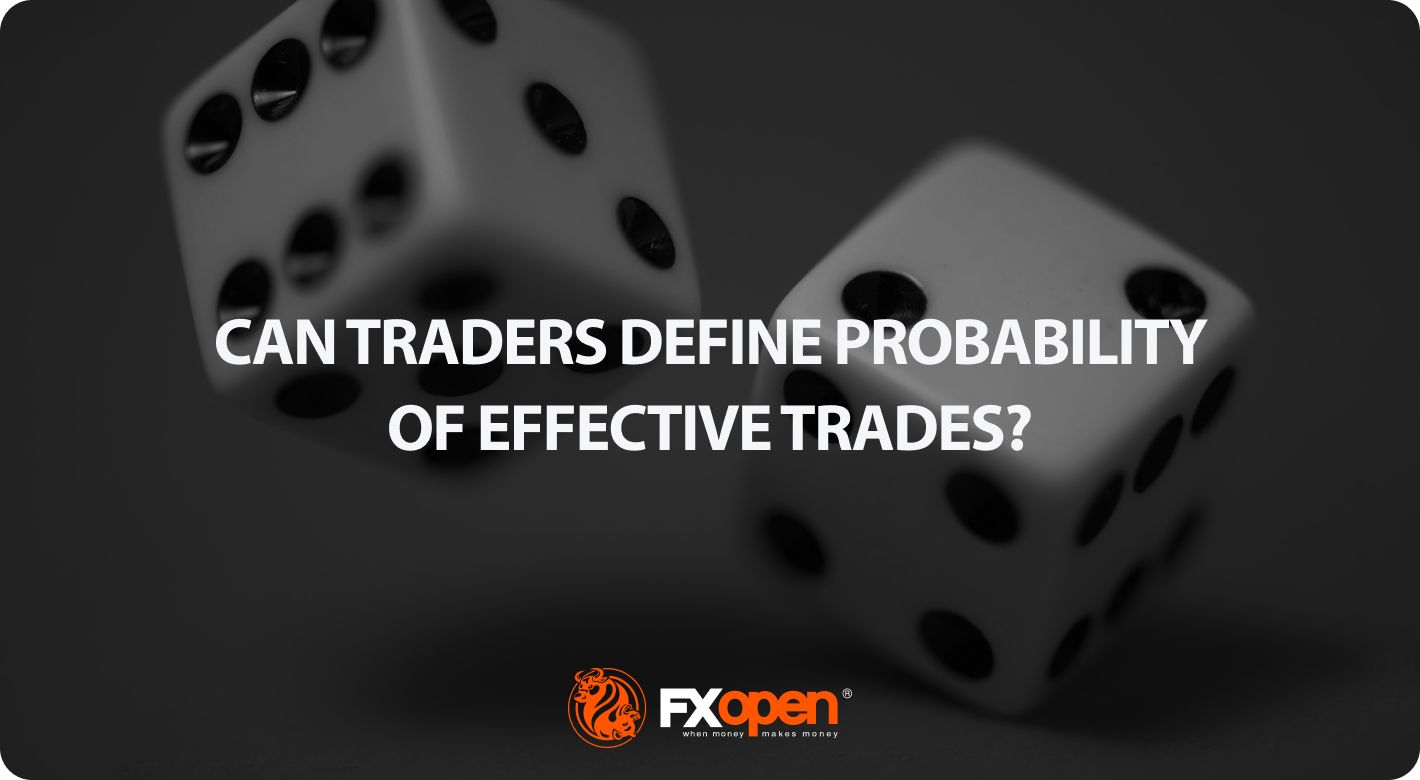FXOpen

Traders are constantly trying to figure out the secret of effective trading. However, the inherent unpredictability of markets minimises the ability to accurately determine the probability of an effective trade. This FXOpen article focuses on the many variables that contribute to the dynamism and uncertainty of financial markets. Let’s consider why it is impossible to estimate the chance of lucky trade and what can be done instead.
Why Is Defining Trading Outcomes Difficult?
Trading involves a multitude of variables, which make it challenging to define the probability of an effective trade. Economic indicators, earnings reports, news releases, and geopolitical events all contribute to trading results.
Economic indicators that reflect the state of the economy are subject to revisions and unexpected changes. Geopolitical events, from political tensions to trade agreements, can quickly change the market trajectory. Market sentiment, influenced by news, social media, and psychological factors, introduces a human element that cannot be accurately quantified. That’s why it’s a challenge to define probability in trading.
Factors Influencing Trading Outcomes
Trading the odds is not an effective approach. This implies an attempt to determine market movements intuitively and believing in the best. However, by relying solely on the illusion of predicting the odds, traders gain a false sense of security and overlook other influential factors.
Still, there are several factors that surely influence the results of trading, including market conditions, risk management, and trader psychology. For instance, volatility and liquidity significantly impact trading. Then, building a risk management strategy and using stop-loss orders may help mitigate potential losses. Lastly, understanding trader psychology, including emotional regulation and discipline, plays a vital role in making objective and consistent decisions.
The Role of Market Analysis
It’s unlikely that someone will be able to fully explain how lucky trades work. But it’s definitely possible to identify how trades built on analysis work and why they’re smarter. Market analysis, such as technical, fundamental, and sentiment analysis, provides insights into market movements.
Technical analysis examines historical price patterns and indicators, while fundamental analysis delves into economic factors. Sentiment analysis gauges the mood of market participants through various indicators, such as social media trends. Trades based on an understanding of charts, fundamentals, and reasons for price movements are much more reliable and more likely to be effective than guessing.
However, traders should not forget about the complexity of defining trading outcomes. Even using advanced indicators, one cannot analyse future price movements with 100% precision. Markets are not static entities, and adaptability and risk management are key.
Risk-Reward Ratio and Win Rate
The risk-reward ratio is a critical tool for improving trading performance. The R/R ratio is a mathematical calculation used to measure the expected gains for every unit of risk undertaken. However, it’s important to note that this is a risk management tool rather than a measure of probability.
Traders often fall into the trap of solely focusing on historical high win rates, believing this guarantees success in the future. However, the efficacy of a trade doesn’t solely hinge on the win rate. A high win rate may be effective when paired with favourable risk-reward ratios, potentially creating a sustainable trading strategy.
Historical Performance
Historical performance analysis involves scrutinising past market data, price movements, and trading patterns to identify trends, correlations, and potential signals. Traders use this analysis to make informed decisions about future market movements based on the belief that historical patterns can repeat themselves.
Analysing historical performance gives traders a valuable perspective on potential future movements. Chart patterns, support and resistance levels, and key technical indicators become tools for analysing market behaviour based on past events.
However, retrieving information from past market behaviour comes with limitations. Relying on historical data without considering current market dynamics may lead to misguided conclusions. Additionally, the occurrence of black swan events can disrupt established patterns.
The Influence of Trader Skill
Trader skill — a combination of experience and knowledge — plays a key role in overcoming uncertainty in trading. Experienced traders can interpret market signals with higher precision. Through exposure to diverse market conditions, traders develop a nuanced understanding of when to adhere to strategies and when to adapt.
However, even the most seasoned traders are not immune to market unpredictability. While trader skill empowers individuals to make informed decisions, it does not ensure infallibility.
Final Thoughts
Ultimately, no one can determine the lucky trade chance. But while there are no guarantees, managing risk and maintaining a long-term perspective are crucial elements for traders.
Analysing charts that can be found on the TickTrader trading platform, relying on indicators, adaptation, and getting as much practice as possible may improve performance in the market. In any case, one should not rely on luck alone. To continue gaining experience, you can open an FXOpen account and enjoy the exciting trading conditions available in the market.
This article represents the opinion of the Companies operating under the FXOpen brand only. It is not to be construed as an offer, solicitation, or recommendation with respect to products and services provided by the Companies operating under the FXOpen brand, nor is it to be considered financial advice.
Stay ahead of the market!
Subscribe now to our mailing list and receive the latest market news and insights delivered directly to your inbox.








